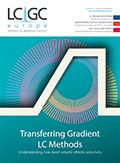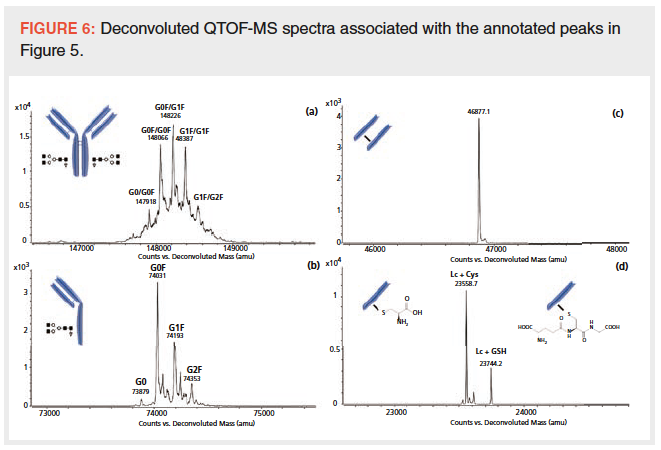The Evolution of 3D Printing
LCGC Europe
This is the fifth in a series of articles exploring current topics in separation science that will be addressed at the HPLC 2019 conference in Milan, Italy, from 16–20 June.
Since its conception in 2012 and the publication of the first paper in 2014 (1), the concept of three-dimensional (3D)âprinted chromatography devices and 3D printing in the separation sciences generally has attracted significant interest globally (2,3). Taking the HPLC conference series as the benchmark, the 2016 edition in San Francisco, USA, featured the first debate on the topic within the open floor discussion: Columns of the Future….and Beyond. In this same edition, both the poster prize and the Csaba Horváth Award were awarded to contributions on 3D-printed columns (4). This trend continued to grow at HPLC 2017 in Prague, Czech Republic, with Brett Paull’s original contribution entitled, Another 12 Months Closer to 3D Printed HPLC Columns, where commercial 3D-printed columns were predicted to hit the market by 2020. At HPLC 2018 in Washington, USA, I was invited to deliver a tutorial on 3D Printing in the Separation Sciences where I covered aspects related to other areas of separation science other than just liquid chromatography (LC). This year, the HPLC 2019 edition in Milan features, for the first time, a preâconference short course on the same topic, and a new session on 3D Printing and Micro and Nanofluidics has been established to accommodate the larger number of contributions in the area.
Despite the tremendous progress, a number of challenges need to be carefully addressed for this technology to break into the future. The most pressing one is the “speed/resolution/build size” conundrum. It is impossible to achieve all three requirements at the same time. For example, two photon-photo polymerization can 3D print models with nanoscale resolution, but can only fabricate small micrometre-sized objects in reasonable times-an estimate printing time for a traditional 100-μL column is approximately 5 months! On the other hand, another 3D-printing technique called digital light processing can produce a full 5-mL column in a couple of hours, but its resolution can produce columns with internal features with a scale on the hundreds of micrometres (5). New techniques addressing this problem are emerging, for example, the continuous liquid interface production (CLIP) (6) and the very recent computed axial lithography (CAL) (7). Interestingly, this latter technique is able to generate inchâsized objects in a matter of a few minutes with excellent finish, and is also capable of 3D printing around pre-existing objects such as, for example, an empty chromatographic column to create the internal bed morphology!
Another aspect to be addressed is the compatibility between materials used in chromatographic operations and additive manufacturing methods. So far, there is a disconnect between the two, with 3D printing mostly focusing on mechanical properties and durability of the printed parts, including their chemical inertness, while LC requires a good level of chemical flexibility to incorporate the chemical functionalities and chromatographic ligands to enable separations.
Additionally, most of the 3D-printing materials commercially available have proprietary composition, which further hampers their use in the highly regulated environments of the food, drug, and biopharmaceutical industries where the chemical composition of the stationary phase needs to be precisely characterized. This limitation has sparked the development of new materials for chromatography compatible with existing 3D printers (5), but an equally valid approach is the development ex-novo of new 3D-printing methods that can process traditional chromatographic materials at the appropriate level of resolution and speed.
I foresee research in the area of 3D printing in the separation sciences will grow exponentially, and will become a concrete reality in the near future. Considering this is a relatively new field, with much to do and still little competition: Is it time for you to join the 3D-printing revolution in chromatography?
References
- C. Fee, S. Nawada, and S. Dimartino, J. Chromatogr. A1333, 18–24 (2014).
- C. Salmean and S. Dimartino, Chromatographia82(1), 443–463 (2019).
- U. Kalsoom, P. N. Nesterenko, and B. Paull, TrAC Trends Anal. Chem. In Press (2019).
- D.S. Bell, LCGC Europe29(9), 506–515 (2017).
- U. Simon and S. Dimartino, J. Chromatogr. A 1587, 119–128 (2019).
- J. R. Tumbleston et al., Science 347(6228), 1349–1352 (2015).
- B.E. Kelly, I. Bhattacharya, H. Heidari, M. Shusteff, C.M. Spadaccini, and H.K. Taylor, Science 363(6431), 1075–1079 (2019).

Simone Dimartino is a senior lecturer at the Institute for Bioengineering at the University of Edinburgh, UK. He received his Ph.D. in 2009 from the University of Bologna, Italy, followed by a postdoc at the University of Canterbury, in New Zealand. He has always worked on the development of new stationary phases for chromatography, spanning from membranes to monoliths to fibreâbased media. He now uses 3Dâprinting methods for the fabrication of chromatography media with perfectly ordered morphology, with specific focus on the design of novel three-dimensional lattices and the development of materials compatible with both 3D printers and chromatographic operations.

Regulatory Deadlines and Supply Chain Challenges Take Center Stage in Nitrosamine Discussion
April 10th 2025During an LCGC International peer exchange, Aloka Srinivasan, Mayank Bhanti, and Amber Burch discussed the regulatory deadlines and supply chain challenges that come with nitrosamine analysis.
















